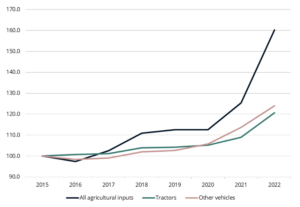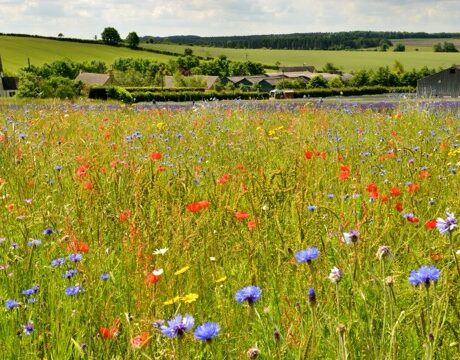IS YOUR FARM BUSINESS COST EFFICIENT? FIND OUT NOW TO PLAN YOUR PRIORITIES
Tim Isaac
Apr, 19 2024It is often said that farming is facing the biggest period of change for a generation. There is a complex range of challenges and opportunities, with various interdependencies between them, which can make them difficult to navigate. Unfortunately, there is no simple answer or silver bullet, but doing nothing is clearly not a viable strategy. The key to determining the way forward is first to take stock of where you are. This will help identify the areas to focus on at an individual business level and then select the most suitable options to move forward.
Most of the information available tends to focus on the opportunities to develop new income streams, be it through environmental schemes or diversification. These are an extremely important part of any farm business strategy, but they’re only half the equation. We have also seen a dramatic increase in all input costs in the last few years, so an equally important part of any business review is to assess all sources of cost on the farm.
AGRICULTURAL INPUTS – MACHINERY & OTHER EQUIPMENT
 Source: Defra Agricultural Prices Index
Source: Defra Agricultural Prices Index
Financial benchmarking, for example using AHDB’s online Farmbench tool, is an incredibly valuable exercise in calculating and comparing costs to identify areas that require closer attention. However, it can take time to get right and may not be for everyone. A potentially simpler place to start is benchmarking the physical efficiency of the labour and machinery input in a business. We know these are usually the biggest costs on a farm, so anything that can be done to improve the efficiency of their use, should have a direct and positive impact on the bottom line.
Ceres Rural was recently instructed to conduct labour and machinery reviews on some of the AHDB’s arable Monitor Farms. This involved comprehensively reviewing all related costs and operations at a detailed level, contributing to a dataset that allows an assessment of efficiency in this area.
The key metrics included:
- Cropped hectares per arable labour unit
- Litres of diesel per cropped hectare
- Horsepower per cropped hectare
- Cropped hectares per metre of spray boom
- Drilled hectares per metre of drill
- Combined hectares per metre of cutter bar
EXAMPLE EFFICIENCY CHART FOR HORSEPOWER PER CROPPED HECTARE

The farms in the dataset contribute to a range of figures, from low to high, and together give an average for each metric. These averages can now be used to assess whether any farm falls above or below the mean – it is a quick and easy job to calculate a farm’s figures for the comparison.
Whilst it is not a binary picture and there may be legitimate reasons for a particular result, it does provide a simple and valuable start when identifying which areas to focus on and the best course of action to take.
For example, if the number of cropped hectares per arable labour unit is low, is there potential to contract out some of the labour resource or use it to help develop a new diversification enterprise?
If the diesel used per cropped hectare is high, is there scope to reduce cultivation intensity or road travel?
If machinery is over capacity, is there an opportunity to downsize, carry out contract work or establish some kind of machinery sharing arrangement or full joint venture?
Cropping is also an important consideration, particularly the use of non-harvested CS/SFI options. Can they be used to increase field efficiency, reduce running costs and increase the life expectancy of machinery?
Further work would be required to fully investigate every option, but this is about finding a place to start. Just by a simple assessment of labour and machinery capacity, it is possible to develop an overall farm business strategy by following these key steps:
- Calculate your costs using the tools available
- Compare your figures with industry benchmarks
- Compare the different options for reducing costs
- Create a labour and machinery plan
- Develop an overall business strategy
It should also be noted that help is at hand. The Defra funded Future Farming Resilience Fund which supports the provision of free farm business advice is available until March 2025 and includes a one-to-one meeting on farm, followed by a tailored report. With only 12 months left to receive a free business assessment and help navigate a viable way forward, book now to avoid disappointment – spaces are limited.
By email: futurefarming@ceresrural.co.uk
By phone: 01223 679 679
Online at: https://ceresrural.co.uk/service/free-business-advice/






